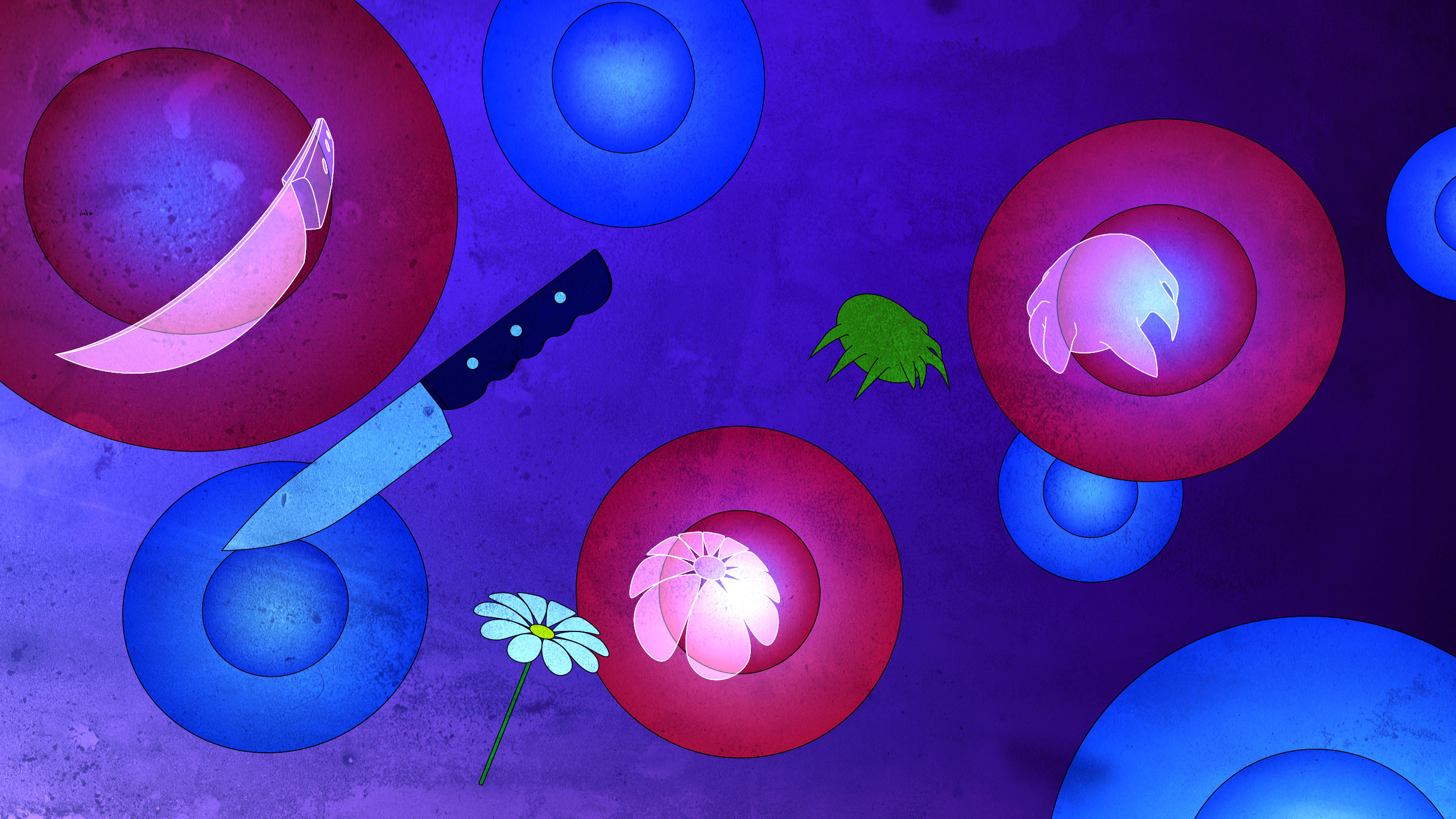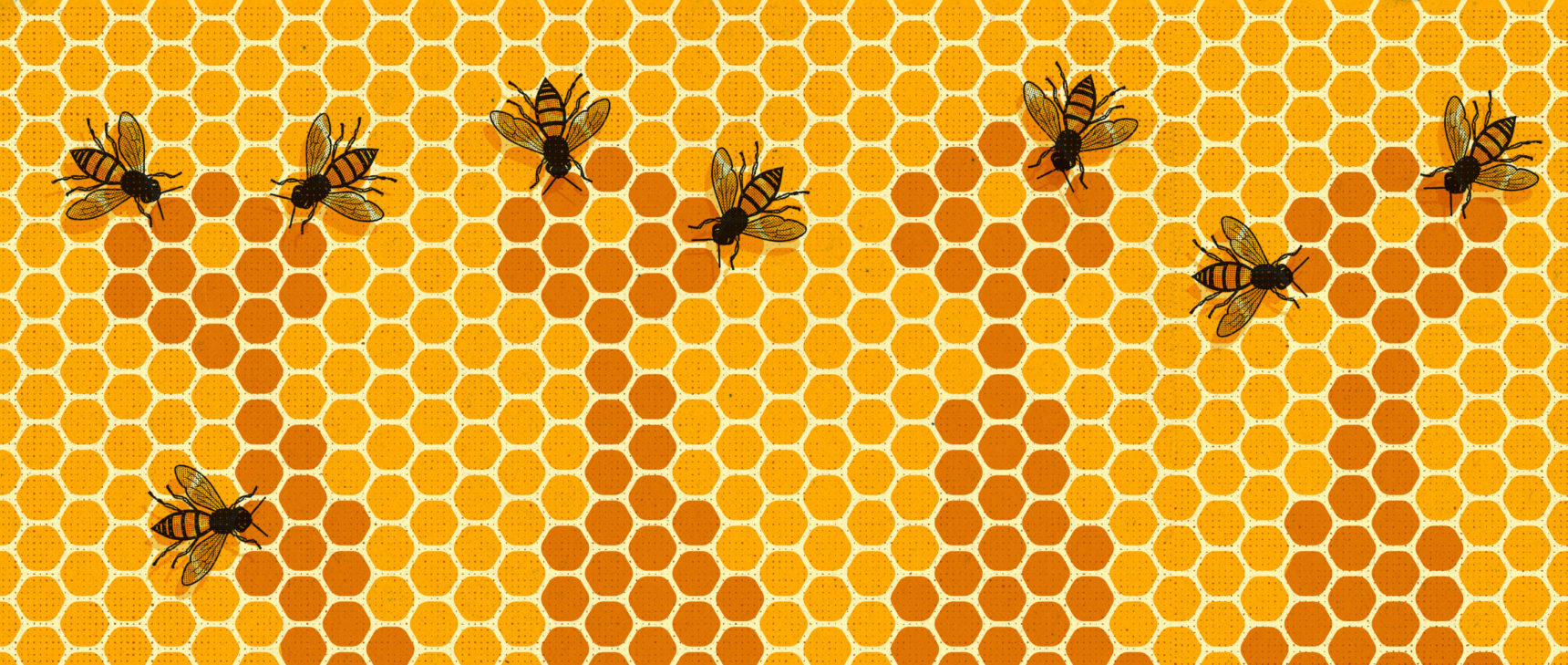Stem Cells Remember Tissues’ Past Injuries

The stem cells that help our tissues recover from injuries have traditionally been considered developmental “blank slates.” Recent work suggests instead that they may in some way store memories of past assaults so that they can promote more effective healing in the future.
Eric Petersen for Quanta Magazine
Introduction
Stem cells, famous for replenishing the body’s stockpile of other cell types throughout life, may have an additional, unforeseen ability to cache memories of past wounds and inflammation. New studies in the skin, gut and airways suggest that stem cells, often in partnership with the immune system, can use these memories to improve the responses of tissues to later injuries and pathogenic assaults.
“What we are starting to realize is that these cells aren’t just there to make tissue. They actually have other behavioral roles,” said Shruti Naik, an immunologist at New York University who has studied this memory effect in skin and other tissues. Stem cells, she said, “have an exquisite ability to sense their environment and respond.”
But when those responses go wrong, they may cause or contribute to a variety of enduring health problems involving chronic inflammation, such as severe allergies and autoinflammatory disorders.
Most tissues in the body contain small reservoirs of long-lived stem cells that can divide and specialize into myriad cell types as required. A stem cell in the skin, for example, can divide and give rise to lineages of cells that produce pigment or keratin, cells that form the sweat glands, or even the flexible barrier cells that allow the skin to stretch when the body moves. Serving as miniature factories for other cell types seemed to be stem cells’ primary function, and because they need to stay versatile, an underlying assumption has been that they have to be “blank slates,” unchanged by their histories. But now a new picture is starting to emerge.
In August, a Nature paper by Boston-area researchers offered fresh evidence for a kind of memory in stem cells, and some of the first for the phenomenon in humans. The team, led by the single-cell sequencing pioneer Alex Shalek and the immunologist José Ordovas-Montañes, both at the Massachusetts Institute of Technology, and the immunologist Nora Barrett at Brigham and Women’s Hospital, had set out to understand why some people suffer from debilitating chronic allergies to airborne dust, pollen and other substances. Most people experience at most a passing bout of coldlike symptoms from these irritants, but about 12 percent of the population has a severe reaction that persists all year and results in uncomfortable polyps or growths.
The work is the first step in the team’s larger quest to understand chronic inflammatory diseases, such as asthma and inflammatory bowel disease, in which the immune system continues to launch unnecessary attacks even after the initial challenge is over. These types of autoinflammatory disorders have long been blamed on the immune system, which is thought to overreact to a perceived threat. But the Boston team suspected there might be a cause in the tissue itself.
They began by taking cells from the inflamed nasal cavities of people with chronic sinusitis and comparing them to cells from healthy control subjects. After collecting about 60,000 cells from 20 different people, they sequenced RNA molecules taken from individual cells to determine which genes were active in them. In the stem cells from the sinusitis patients, they saw that many of the active genes were associated with allergic inflammation — in particular, the genes were targets of two immune mediators called interleukin 4 (IL-4) and interleukin 13 (IL-13). These are small molecules that immune cells like T and B lymphocytes typically use to communicate with one another.
The fact that the targeted genes were active in stem cells meant that the stem cells were apparently in direct communication with the immune system. A hunch that this communication might have an effect on the chronic nature of the disease led the researchers to a further set of experiments.
They removed cells from the airways of allergy patients, grew them in culture for about five weeks, and then profiled their gene activity. They found that the genes involved in allergic inflammation were still active, even though the allergic threat of dust and pollen was long gone. In addition, the researchers described many of the cells as “stuck” in a less-than-fully-mature state.
For Shalek, this result signals “that stem cells may transfer ‘memories’ to future generations of cells and this can cause near-permanent changes in the tissue they replenish.” This process invites comparisons to the immune system: B cells and T cells draw on their experiences with infections they have previously repelled to fight off new ones more effectively. Similarly, stem cells may retain a record of past assaults to sharpen their responses next time. But in the case of the allergy patients, that memory apparently becomes maladaptive. It may keep stem cells perpetually signaling to the immune system that an attacker is there, creating a feedback cycle that promotes inflammation and polyps.
According to Shalek, an understanding of which cells become “bad actors” and how their response propagates throughout a tissue should lead to more effective interventions. In fact, in their paper they were able to test the effects of an antibody that blocks IL-4 and IL-13 on the stem and secretory cells of an individual with nasal polyps. They noted a substantial restoration of gene expression associated with healthy tissue, a promising step toward the development of future therapies.
“This opens a new paradigm where we don’t only focus on the self-renewal potential of these cells but on their potential interaction with their surroundings,” said Semir Beyaz, an immunologist at Cold Spring Harbor Laboratory. Beyaz was not involved in the study by the Boston group but has made similar findings in the gut: In a paper published in Nature in 2016 he demonstrated that the intestines of mice on a high-fat diet produced a greater number of stemlike cells than did those of mice eating less fat. When dividing, the intestinal stem cells also seemed to add to their own numbers more frequently rather than producing more differentiated cells, a change that has been linked to diseases like cancer.
“Functionally, we are realizing that cells can be tuned,” Naik said. “Immunologists are starting to understand that immune reactions take place in tissues, and the way tissues respond to this is at the level of the stem cell.”
A few years ago, in collaboration with stem cell biologists, Naik looked at the effects of prior injury and inflammation on wound healing in mice, in the hope of understanding whether experience with inflammation affects stem cells. As described in their 2017 paper in Nature, she and her colleagues discovered that if patches of skin on mice were inflamed and allowed to heal, subsequent wounds to that same spot would heal 2.5 times as quickly, an effect that could last as long as six months.
In that experiment, Naik explained, the memory retained in the stem cells was beneficial because it was “tuning cells to be more powerful at healing wounds and regeneration.” But the flip side of this finding, as Shalek, Barrett and Ordovas-Montañes had observed, is that “if you teach [the cells] bad behaviors … they are going to remember those bad behaviors as well,” she said.
How the stem cells are storing these memories is unknown; in both the allergy and the wound healing studies, the mechanism appears to involve some modification of the DNA that makes certain genes more or less accessible to activation. Naik found that the DNA in the skin stem cells of the twice-wounded mice contained many regions that were less tightly packed, which usually indicates gene activity, and some of those open regions were retained long after the inflammation was over.
As Naik and her colleagues discussed recently in a review paper for Cell, stem cells in a wide range of tissues engage in a chemical “dialogue” with the immune system, with both sides — and potentially many other cell types — pooling their information to cope most effectively with changing conditions. Whatever the details of those conversations might be, all the evidence points to stem cells playing a central role in helping to make tissues more adaptable by preserving some record of their history.
“It makes more sense that a tissue would just learn from its experience,” Naik said. “That way it doesn’t have to reinvent the wheel every single time.”



